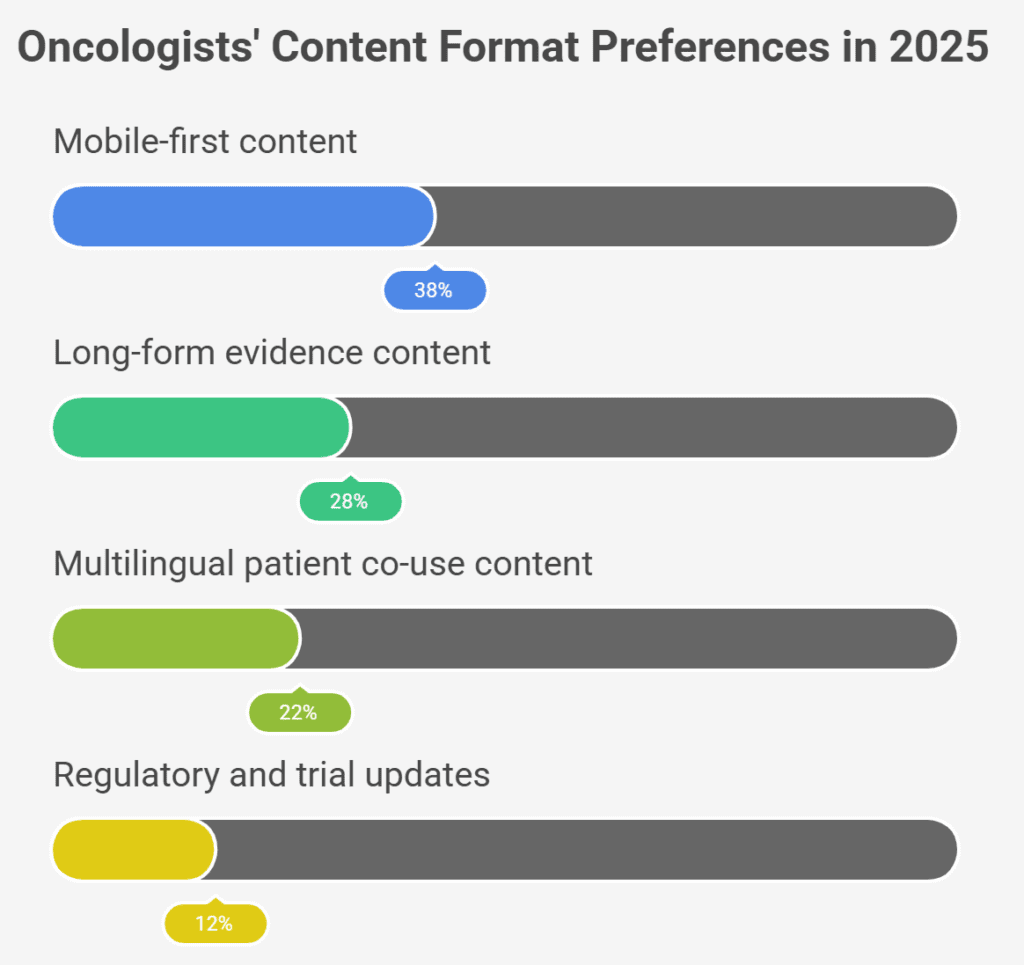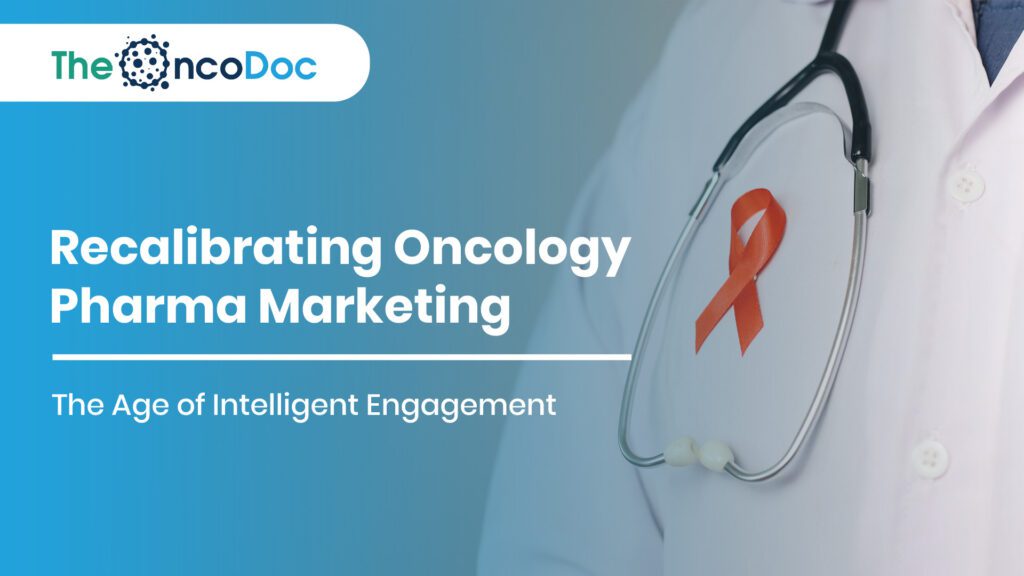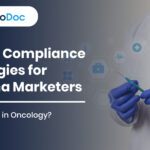Introduction: From Product Push to Precision Partnership
The landscape of oncology is being transformed by innovation, from precision medicine and immunotherapy to companion diagnostics and AI-enhanced care protocols. Yet, the marketing approaches deployed by many pharmaceutical firms lag far behind these scientific breakthroughs. They continue to rely heavily on broad-spectrum tactics, unsegmented messaging, and promotional overload that alienates rather than engages oncologists.
In a digital-first world, the clinician’s attention is fragmented, their time pressured, and their expectations evolving. Oncology pharma marketing must now shift from volume to value, from information to insight, and from brand-centric messaging to care-centric collaboration.
This article explores how pharma marketers can build intelligent, data-driven, and human-centered oncology engagement models that earn trust, support clinical impact, and foster enduring partnerships with oncology professionals.
Section 1: Understanding the New Oncology Audience
The oncology landscape is no longer navigated by clinicians seeking one-size-fits-all answers. Today’s oncologists are deeply analytical, digitally fluent, and pressed for time. Rather than passive recipients of promotional messaging, they are active knowledge seekers who demand content tailored to their clinical reality, practice setting, and communication style.
A 2025 global survey of 2,200 oncologists revealed a striking diversity in content preferences, reflecting a generational and geographical shift in engagement behaviors. The largest cohort, 38%, gravitate toward mobile-first, bite-sized formats, favoring quick clinical updates via apps, short videos, or digital flashcards during their tightly packed schedules. Meanwhile, 28% prefer long-form, evidence-heavy content like deep-dive publications or expert panel discussions, valuing comprehensive insights that inform complex treatment pathways.
Interestingly, 22% of oncologists prioritize multilingual, patient-facing content, often repurposing it to bridge communication gaps during consultations, particularly in multilingual countries. A smaller yet critical segment, 12%, actively tracks policy, access, and regulatory developments, showing keen interest in early trial data and reimbursement trends.

This fragmentation of preferences reinforces a key mandate for pharma marketers: intelligent segmentation and agile content strategy are no longer strategic options, they are essential tools to remain clinically relevant in a saturated digital ecosystem.
Section 2: Moving from Promotion to Precision Education
The top frustration among oncologists in pharma communication is “too much noise, too little insight.” Brand teams must therefore reframe their approach from pushing messages to curating relevance.
What Works:
- Clinical Decision Support Aids: AI-enhanced summaries of pivotal trial outcomes tailored by tumor type and line of therapy.
- Interactive Pathways: Adaptive learning modules that adjust based on the user’s answers to simulate diagnostic or therapeutic decisions.
- Microlearning: 3-5 minute evidence bursts from KOLs, optimized for mobile.
“The pharma rep of the future isn’t a person, it’s a clinically intelligent chatbot integrated into our EMR,” noted a senior medical oncologist from Mumbai during a 2024 digital HCP panel.
Pharma must now design content not just for omnichannel delivery, but for omnichannel uptake, where educational friction is reduced and contextual relevance is maximized.
Section 3: Real-World Evidence (RWE) – The New Marketing Currency
As oncology becomes more complex, traditional trial-centric promotional claims are losing credibility among clinicians. Modern oncologists, managing diverse patient populations with comorbidities and treatment variability, demand data that reflects real-world performance, not just ideal trial outcomes.
Real-World Evidence (RWE) has therefore emerged as a powerful marketing differentiator. It lends authenticity, supports shared decision-making, and reinforces the clinical relevance of therapies in day-to-day practice.
How RWE is Being Used as an Engagement Asset:
Pharma marketers are embedding RWE-driven tools into HCP platforms that allow comparisons between:
- Progression-Free Survival (PFS): Real-world vs. trial outcomes by tumor type
- Biomarker Response Rates: Stratified by geography and patient age
- Adverse Event Discontinuation: Rates under actual prescribing conditions
A 2024 pilot by a leading pharma company offering metastatic lung cancer treatment embedded an interactive RWE dashboard on its HCP portal. The result was compelling: a 52% increase in repeat oncologist visits to the platform and a 23% rise in follow-up discussions initiated by the field force.
This shift proves that when pharma speaks the language of clinical reality, trust and engagement follow.
Section 4: Empowering Peer-to-Peer Exchange – Digitally
Peer influence is still a gold standard in medical decision-making. What has changed is where and how those conversations take place.
New Arenas of Peer Influence:
- Virtual Tumor Boards: Enabling asynchronous case discussions, especially across Tier 2/3 cities.
- WhatsApp Communities: Moderated groups for ongoing updates from major oncology conferences.
- Social Learning Platforms: Think “LinkedIn for oncologists,” powered by CME modules and polling features.
One platform saw a 70% increase in monthly active users when pharma-sponsored cases were integrated, but brand presence was kept subtle and educational.
Section 5: Ethics-Driven AI in Pharma Content
AI has unlocked hyper-targeted engagement, but its ethical use is now under scrutiny. Transparency, consent, and content integrity are vital for continued HCP trust.
Key Principles for Ethical AI Use in Oncology Marketing:
- Explainable AI: HCPs must be able to trace how AI arrived at a recommendation or data summary.
- Data Consent Management: CRM systems must ensure opt-in transparency for profiling and behavioral tracking.
- Human Oversight: All AI-generated messaging or insights must be medically reviewed.
In a 2024 compliance audit, oncology marketers using black-box AI for HCP targeting saw 40% higher opt-out rates than those using rule-based, transparent engines.
Section 6: Pharma’s Role in Enhancing Adherence and Outcomes
While adherence is largely viewed as a patient issue, pharma can play a vital upstream role by enabling oncologists with predictive insights and digital nudges.
Use Case:
An AI-powered dashboard monitored patient-reported symptoms (fatigue, nausea, sleep) via a companion app. When a non-adherence risk threshold was crossed, an alert was sent to the treating oncologist with suggested patient communication scripts.
Result: Adherence to oral chemotherapy improved by 18% across a 12-week period in the pilot cohort.
Pharma’s new mandate is not just driving prescriptions, but sustaining them responsibly.
Section 7: Regional Personalization and Language Equity
In India and other emerging oncology markets, the dominance of English in pharma communication creates a disconnect. Clinicians and patients often navigate care discussions in regional languages, making localized content not just a preference, but a necessity.
Global brands must recognize that cultural and linguistic relevance significantly enhances educational engagement. Personalized, regional content isn’t just more inclusive, it’s more effective.
Current Trends in Language-Based Oncology Engagement:
- Voice-led educational content in regional languages such as Hindi, Tamil, Marathi, and Bengali is witnessing increased consumption, particularly through mobile apps and WhatsApp-based delivery.
- Doctor-patient aids like symptom visualizers, treatment explainers, and consent forms are far more impactful when provided in the patient’s native language.
- State-level e-learning initiatives are partnering with pharma companies to deliver oncology continuing education (CME) to rural and semi-urban oncologists, with regional language support driving uptake.
A 2024 study conducted across six Indian states found that oncologists were 2.2 times more likely to register for webinars conducted in their preferred language than in English-only formats.
These insights highlight a clear imperative: pharma marketing must move beyond language uniformity and invest in regionally adapted, culturally aware engagement to drive both clinician education and patient impact.
Section 8: Real-Time Content Feedback Loops
In an era where clinical information evolves rapidly, relying on delayed content updates is no longer viable. Traditional oncology marketing often waited months to refine messaging based on HCP feedback, but today’s environment demands agile content ecosystems with continuous, real-time input from clinicians.
To meet this need, pharma marketers are embedding listening mechanisms directly into digital assets, enabling faster iterations and more relevant engagement.
Smart Feedback Methods in Action
- On-page feedback prompts like “Was this helpful?” enable HCPs to promptly exchange responses to scientific material.
- A/B testing frameworks compare different versions of the same email, landing page, or webinar invite to assess effectiveness in real time.
- AI-powered chatbots, deployed during or after educational sessions, collect qualitative insights about content clarity, utility, and gaps.
These tools are more than operational enhancements, they are strategic assets. Platforms equipped with feedback loops reported a 35% drop in bounce rates over a six-month period, along with improved content dwell time and higher session return rates.
In oncology marketing, listening is the new leading. Real-time feedback closes the loop between creation and relevance, ensuring content remains both timely and trusted.
Section 9: Data-Driven Field Force Empowerment
The sales rep is not dead, but they are being reborn as insight navigators. With AI tools, reps can now prepare for a meeting with content tailored to the oncologist’s specialty, past interactions, and preferred format.
Example Tools:
- Pre-call Smart Briefs: Summarizing the oncologist’s digital behavior and trending topics
- Post-call AI Summaries: Auto-generated engagement recaps with action suggestions
- Geo-optimized Scheduling: Matching rep visits with CME event calendars or regional patient camps
A pilot across Southeast Asia showed a 41% increase in rep-HCP meeting productivity when such tools were deployed.
Section 10: Cross-Sector Collaborations to Scale Impact
Oncology’s complexity, marked by diverse patient needs, rapid scientific evolution, and systemic healthcare gaps, cannot be tackled by the pharmaceutical industry in isolation. True progress requires synergistic collaboration across sectors, where pharma joins forces with public health institutions, diagnostic innovators, and technology disruptors to amplify reach and impact.
Strategic Collaboration Models Driving Scalable Change
Pharma leaders are increasingly forging purposeful alliances to extend their value beyond therapeutics:
- AI and healthtech startups are enabling predictive oncology tools that flag high-risk patients earlier through algorithmic modeling.
- State cancer control cells provide epidemiological insights and access to underserved populations, empowering data-driven outreach and awareness.
- Diagnostic partners offer co-branded solutions for biomarker testing, bridging the gap between diagnosis and timely treatment.
One compelling example is a tripartite initiative between a leading oncology brand, a government health agency, and an AI diagnostics firm. Launched in rural India, the project deployed mobile-based cervical cancer screening using AI-driven image analysis. In just six months, 3,500 women were screened, and 72 early-stage cancers were successfully identified, many of whom would have otherwise gone undiagnosed.
This is not just collaboration, it’s co-creation for impact. Such models prove that when pharma integrates itself into the larger health ecosystem, it moves from being a medicine supplier to a healthcare solutions partner, driving earlier detection, faster intervention, and better outcomes at scale.
Section 11: Measuring What Truly Matters
For years, oncology marketers have relied on surface-level metrics like email open rates and banner clicks to gauge campaign success. But as the industry moves toward evidence-led engagement, these traditional indicators no longer capture the depth or quality of clinician interaction.
In this new paradigm, success is measured not by how many eyes a message reaches, but by how meaningfully it influences clinical thinking and behavior.
Redefining Oncology Engagement KPIs
Modern metrics focus on sustained, value-driven interaction. For instance, time-on-page for peer-reviewed content reflects more than just a page view, it indicates content resonance and relevance. Similarly, repeat logins to clinical calculators or real-world evidence dashboards signal genuine utility in day-to-day decision-making.
Beyond digital behavior, deeper insights now come from CME participation rates segmented by therapeutic area or brand region, and from intent-to-prescribe shifts tracked after exposure to educational touchpoints. Perhaps most revealing are Net Promoter Scores (NPS) from oncologists post-webinars or field visits, capturing sentiment and brand trust at a more personal level.
Modern technologies such as Veeva Nitro, Adobe Experience Cloud, and IQVIA Link are now giving pharmaceutical marketers access to dynamic dashboards that compile these analytics in real time, enabling teams to quickly adjust campaigns and maximize relevance.
In this metrics makeover, the future of oncology pharma marketing isn’t just about being seen, it’s about being useful, trusted, and clinically indispensable.
Conclusion: Humanizing the Algorithm
In the drive for automation and personalization, the soul of oncology marketing must not be lost. Behind every brand strategy is a clinician trying to save a life. Behind every campaign is a patient waiting for clarity, empathy, and outcomes.
The future belongs to pharma marketers who blend intelligence with integrity, who don’t just chase attention, but earn it. Who don’t just optimize delivery, but amplify care.
By anchoring efforts in empathy, education, and ethical precision, oncology marketers can redefine success, not in clicks or conversions, but in connections that save lives.
The Oncodoc team is a group of passionate healthcare and marketing professionals dedicated to delivering accurate, engaging, and impactful content. With expertise across medical research, digital strategy, and clinical communication, the team focuses on empowering healthcare professionals and patients alike. Through evidence-based insights and innovative storytelling, Hidoc aims to bridge the gap between medicine and digital engagement, promoting wellness and informed decision-making.



